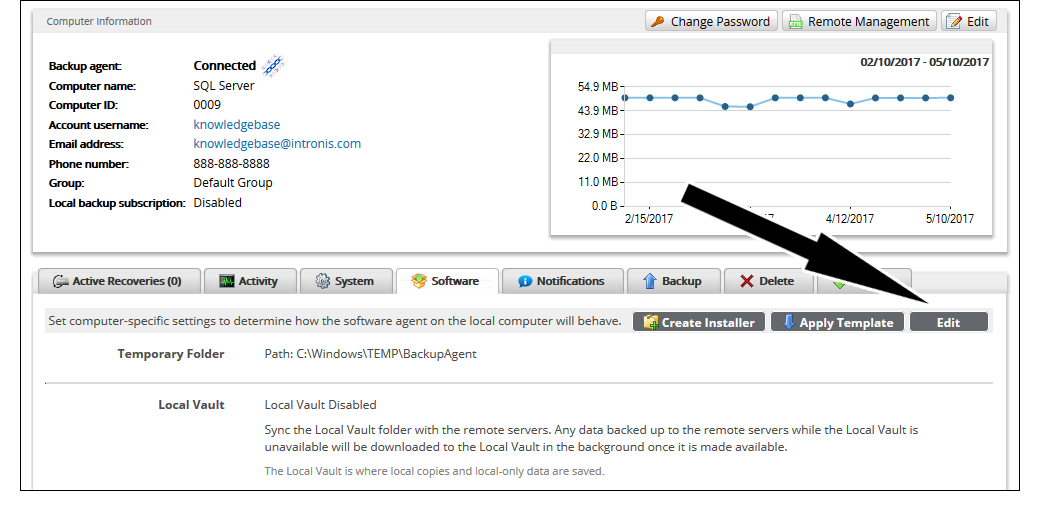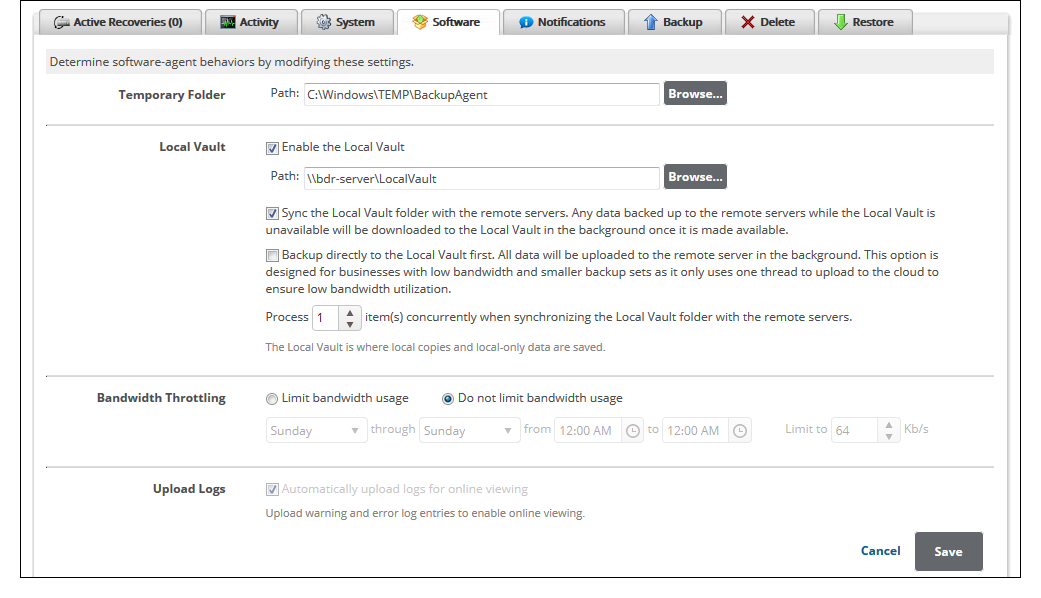The Local Vault stores a copy of all backed up data for backup sets that are online and local as well as local-only (excluding Imaging, Hyper-V Rapid Recovery, and VMware QuickSpin). Having a copy of backed up data stored locally typically allows you to restore more quickly than restoring from a cloud copy of backed up data. The following article will provide you instructions for setting up the Local Vault in addition to giving you some more insight into how it works.
Please note that Intronis Backup does not support drive swapping. The Local Vault can only exist on one drive which cannot be rotated in and out. The reason for this is because new files and revisions are added to the Local Vault in a cumulative and interdependent manner. If you are swapping drives, you could have the base copies on one drive and the revisions on another; if this happens, the software will not be able to restore the files.
Enabling the Local Vault
- Log into the management portal andsettingspreferences.png navigate to the computer account you want to enable the Local Vault for.
- Go to the Software tab and hit the Edit button below that.

- Enable the Local Vault by checking the box next to Enable the Local Vault and setting a path for the Local Vault in the field below it.

The two options available for customizing the Local Vault are:- Sync the Local Vault folder with the remote servers -This option will make sure data stored in the Local Vault matches what is in the cloud. It is important to keep this checked if you have online and local backups since it will ensure you can restore all of your data from either the Local Vault or the cloud.
Backup directly to the Local Vault first. All data will be uploaded to the remote server in the background - This option, also called "Async," will tell the software to back up data to the Local Vault first then add those items to an upload queue after the backup job finishes. The Async function is designed only for clients intermittent internet connections because it allows the software to retry uploads if they are interrupted, indefinitely.
- Local Vault Synchronization Workers - Towards the bottom of the Local Vault section is where the synchronization worker count is set. Changing the worker count changes how many files will be uploaded simultaneously while the Async queue is being processed as well as when files are being downloaded to the Local Vault.
- Once you have configured the Local Vault the way you want it, click Save to save your changes.
Async
While having the ability to complete a local backup first sounds like an attractive option, there are a number of reasons not to choose this option unless you absolutely need to.
- The major issue is that Async is inherently slower when uploading backup data than a normal, synchronous upload. As a result, data will take significantly longer to upload. Often, this will make online and local backups of data larger than a few dozen gigabytes unfeasible.
- Related to (1), if you add items to the Async queue more quickly than it can upload them, the upload queue will fall behind. If this happens, the data we have on our servers will not match what is in your Local Vault (we'll be missing a significant portion). When this occurs, you may not be able to restore data successfully in the event your Local Vault dies or is inaccessible. Therefore, you risk throwing away the benefits of online and local backup: data duplication and off-siting.
- Having the Async queue run in the background means it will take some resources away from the software, potentially extending the times of backup and restore jobs running at the same time.
If you choose to use Async, make sure you seed your data at the start and make sure the upload queue finishes itself out every few days.
